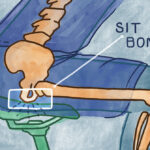Sam Balto is no stranger to innovative approaches to street safety. Before his move to Portland in 2018, he gained recognition in Boston for his creative traffic-calming methods, including deploying cardboard cutouts of football icon Tom Brady near a school. Upon arriving in Portland, his tactical urbanism evolved, notably with the “Red Cup Challenge.” However, none of his previous endeavors captured public imagination quite like the bike bus.
What began as a modest initiative to encourage children’s physical activity on Earth Day in April has since exploded into a viral sensation. A TikTok video showcasing the bike bus garnered over 1.5 million views, catapulting the concept into the global spotlight. Sam is eager to expand the reach of the bike bus and share his insights. Before his schedule became too packed, we managed to get him to share his secrets on how to replicate this successful model.
Here’s Sam’s guide on how to get your own bike bus rolling in your community:
Define Your Core Motivation
The first step is to pinpoint your “why.” This crucial question serves a dual purpose. Firstly, it sharpens your focus on the specific problem you aim to address. Secondly, it acts as your anchor, reminding you of your initial goals when challenges arise, especially during less favorable weather conditions.
Sam’s motivations have varied depending on the school communities he’s worked with. At Cesar Chavez Elementary in North Portland, his aim was to cultivate a robust community spirit and reignite a dormant walking school bus program. He sought to broaden physical activity opportunities for children and provide transportation support for students ineligible for traditional bus services or lacking transportation to school. At Alameda, the primary “why” for launching the bike bus was to alleviate the surge in car traffic during school drop-off times, a problem exacerbated by pandemic-related school bus route cancellations.
 Sam Balto at the front of the bike bus, guiding children and parents on bikes in Portland.
Sam Balto at the front of the bike bus, guiding children and parents on bikes in Portland.
Assemble Your Bike Bus Brigade
With your “why” firmly established, the next step is to enlist allies. Starting a bike bus is definitely a team effort. Seek out individuals who share your passion for this initiative. Sam found his initial collaborators by spending time near the bike racks before and after school, engaging with parents who were already cycling with their children. He shared his bike bus vision and invited them to join forces.
Once you’ve gathered your core team, the next crucial step is planning your route.
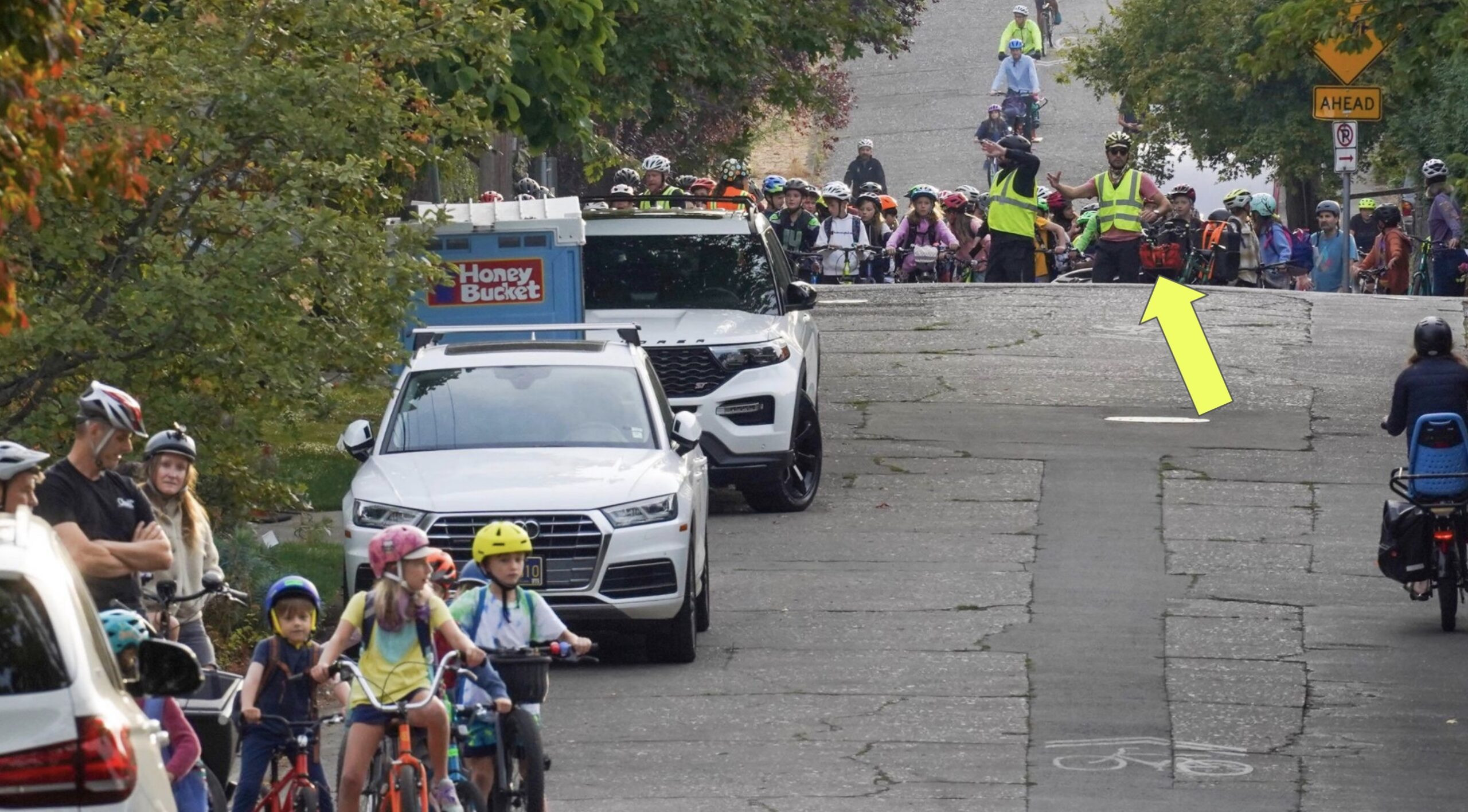 Paul assists Sam with managing the bike bus group in Portland, showcasing community support.
Paul assists Sam with managing the bike bus group in Portland, showcasing community support.
Charting Your Course: Route Planning
The route is the backbone of your bike bus. Sam’s methodical approach to route planning is key to maximizing participation and safety.
First, understand your school’s catchment area. Then, obtain official school bus route information. Many school districts publish this data on their transportation websites, often readily accessible. Sam utilizes this information by plotting bus stops on Google Maps Layers. This provides a visual representation of student distribution and existing bus infrastructure.
Next, identify bus stops located within a bikeable and walkable radius of 1 to 1.25 miles from the school. These become potential pickup points for your bike bus. School administrators or staff may have access to student ridership lists per bus stop, offering valuable contact information for families to invite to your bike or walking bus.
Portland’s network of neighborhood greenways plays a vital role in route selection. These designated routes prioritize cyclist and pedestrian safety, featuring traffic calming measures like speed bumps, reduced speed limits (citywide 20 mph), clear signage, and traffic diverters to minimize car traffic. Alameda Elementary, for example, benefits from the NE Klickitat greenway (east-west) and NE 37th/Alameda greenway (north-south).
Examining maps showing student addresses in relation to the bike bus route reveals the proximity of many families to the established path. Families residing slightly further, about four blocks or more from the main meeting points, have even formed “micro bike buses,” cycling together to join the main group. Many other families along the route simply join in as the bike bus passes by their corner.
The inaugural bike bus route was intentionally simple, confined to a single street (NE Klickitat). This initial simplicity aided in establishing the concept. As the bike bus became a weekly fixture, a second meeting point was added to accommodate families living north of NE Fremont, a major arterial road, expanding accessibility and participation.
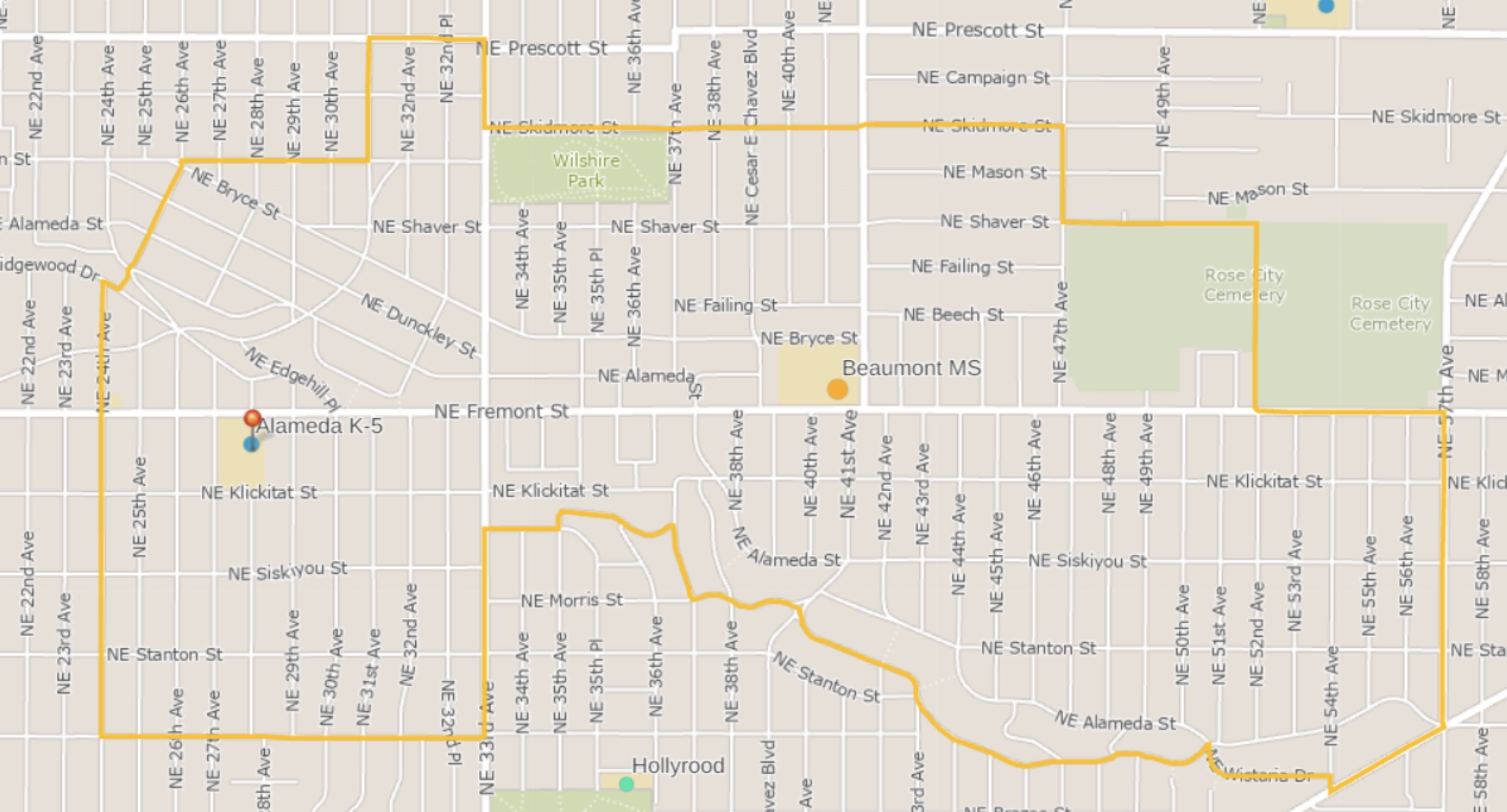 Map showing Alameda Elementary catchment zone used for bike bus route planning in Portland.
Map showing Alameda Elementary catchment zone used for bike bus route planning in Portland.
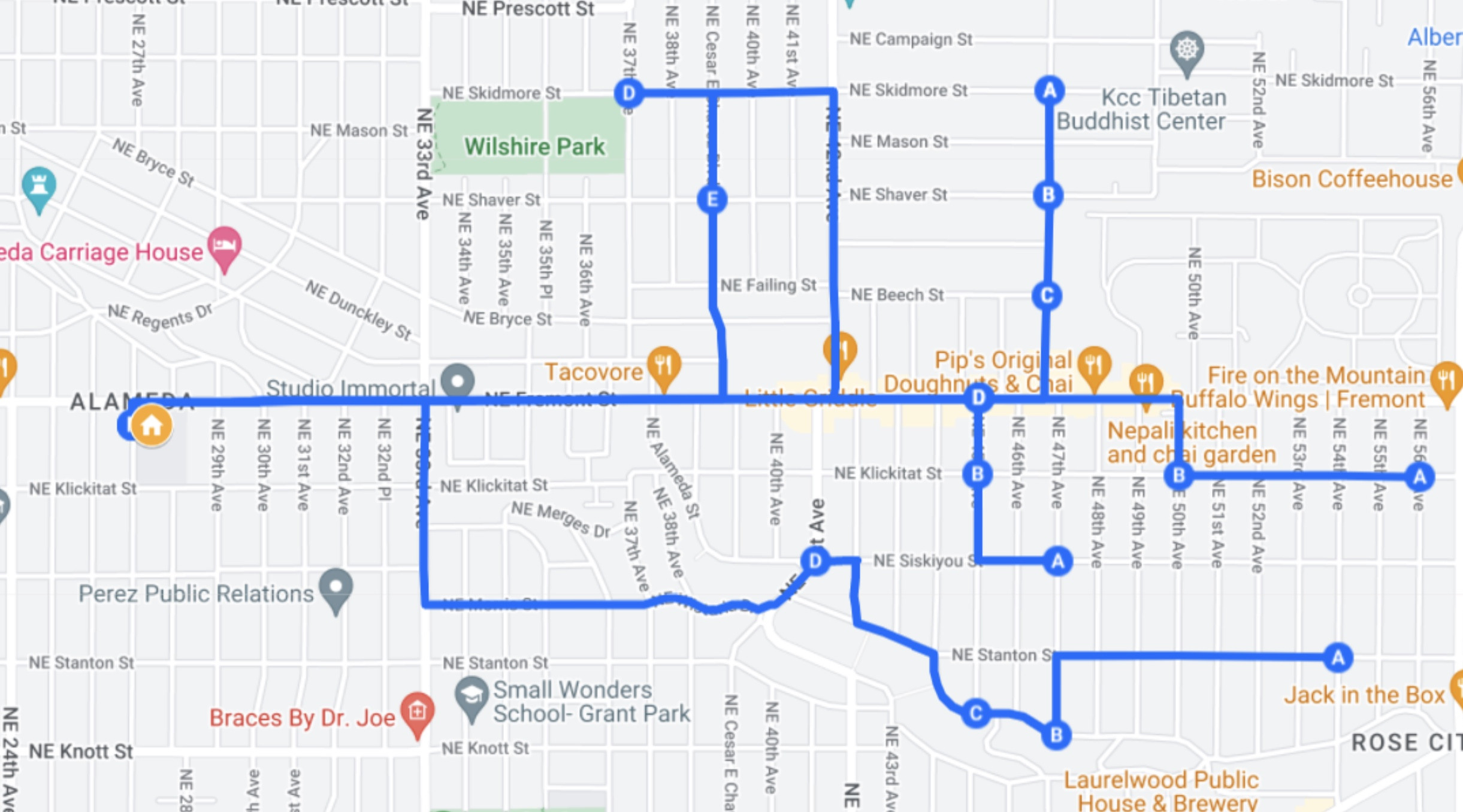 Map illustrating motorized yellow school bus routes in the Portland area.
Map illustrating motorized yellow school bus routes in the Portland area.
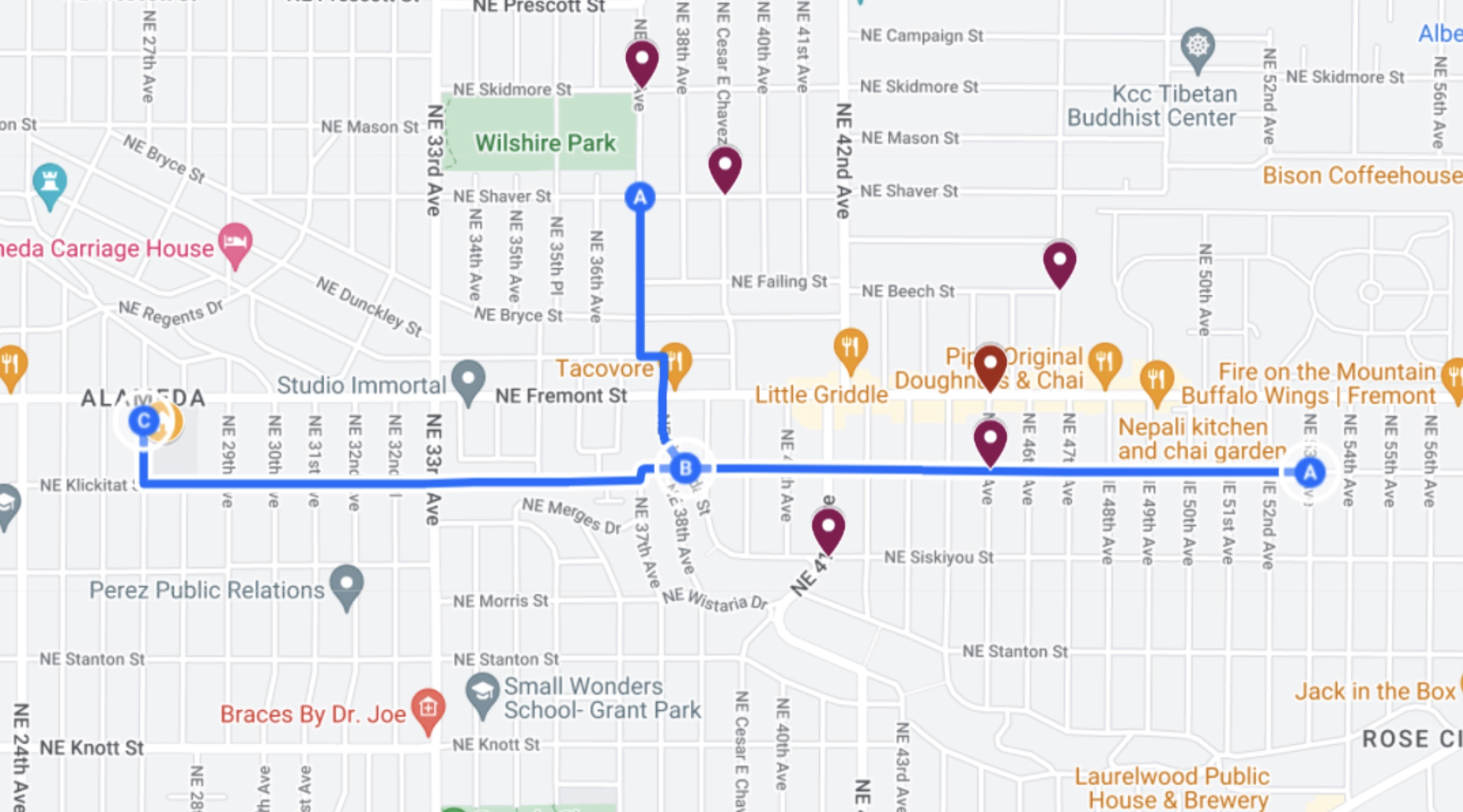 Map displaying the bike bus route with marked school bus stops in Portland.
Map displaying the bike bus route with marked school bus stops in Portland.
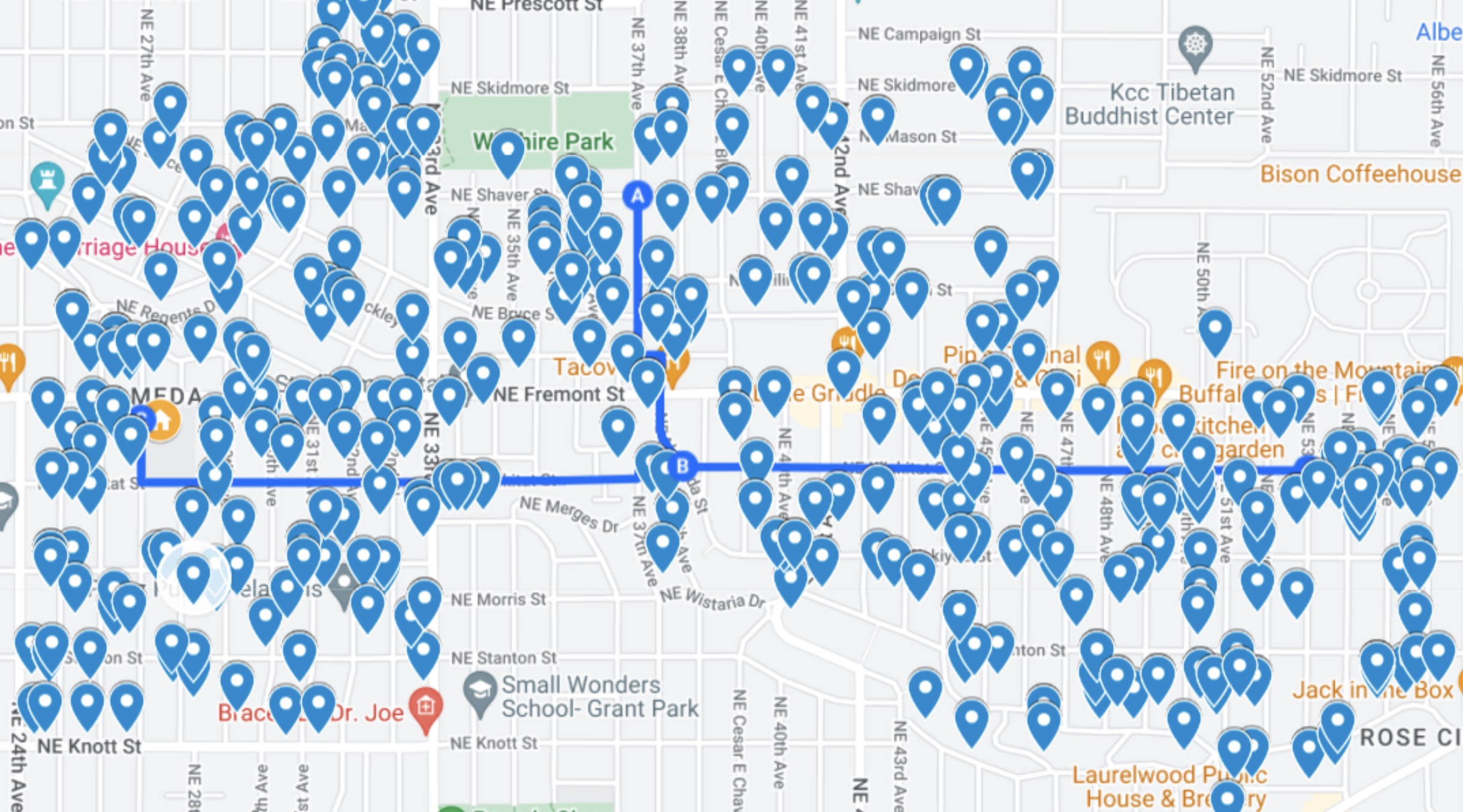 Map showing student home addresses in relation to the bike bus route in Portland.
Map showing student home addresses in relation to the bike bus route in Portland.
Get the Word Out: Promotion and Engagement
Once your route and meeting times are set, create a flyer and distribute it widely. Sam draws inspiration from his experience in the 2008 Obama campaign, where he registered over 2,000 college students. He applies the same outreach enthusiasm to the bike bus, advocating to everyone and anyone. Inclusivity is key – even those who typically drive are invited and made to feel welcome to join, even occasionally.
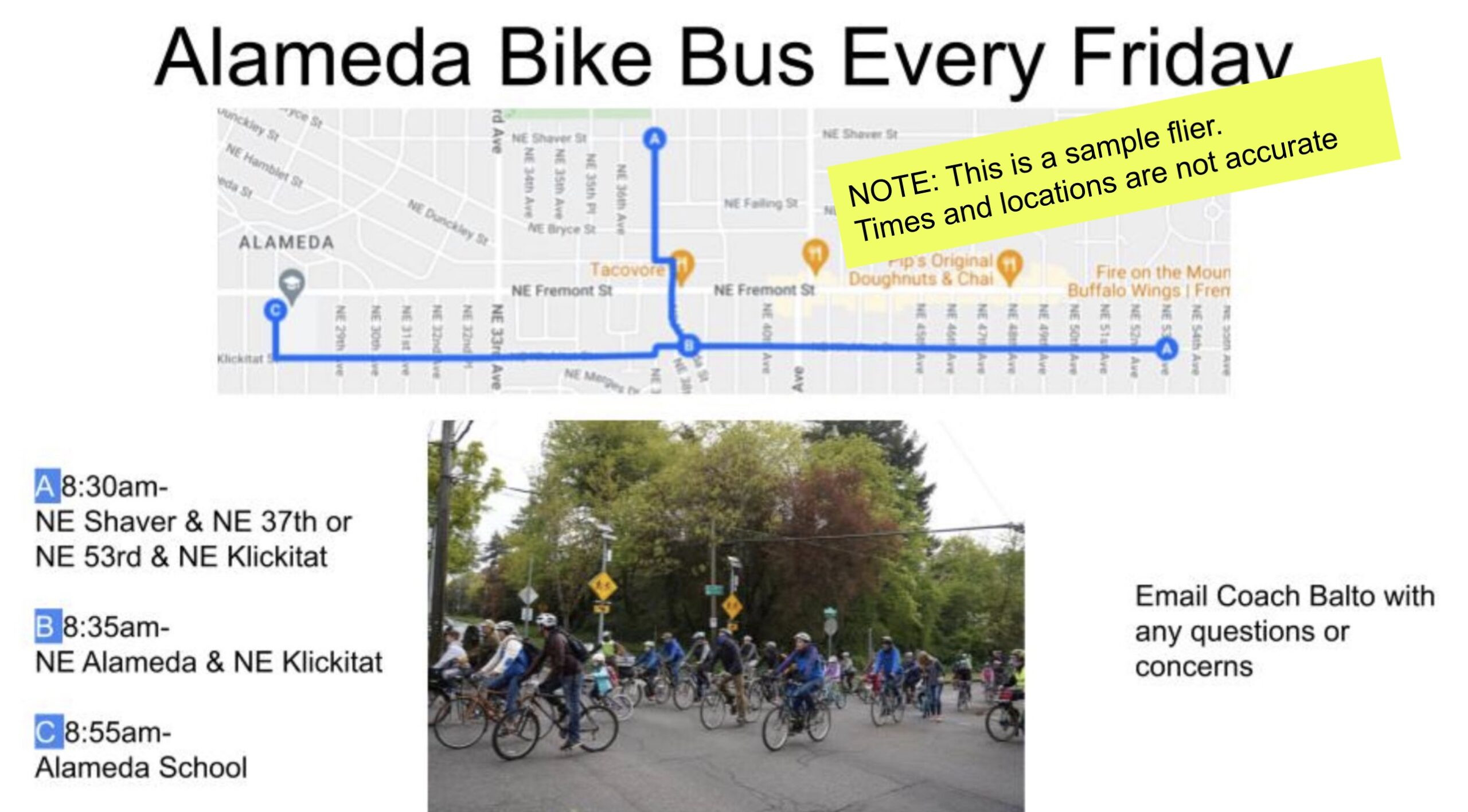 Sample flyer promoting the bike bus, designed by Sam Balto for community outreach in Portland.
Sample flyer promoting the bike bus, designed by Sam Balto for community outreach in Portland.
To recap, Sam’s essential tips for launching a successful bike bus are:
- Partner Up: Find at least one other family to collaborate with.
- Map and Communicate: Create a clear route map with meeting times and share it broadly. Emphasize inclusivity and a welcoming atmosphere.
- Consistency is Key: Regularity fosters growth as families and students can reliably incorporate the bike bus into their routines.
- Just Start: Begin even with a short, three-block ride. Every journey begins somewhere, and even small beginnings can build significant momentum and community support.
Ready to roll? With these steps, you’re well on your way to creating your own bike bus and enhancing community, health, and sustainable transportation in your neighborhood, inspired by the Bike Portland movement.

